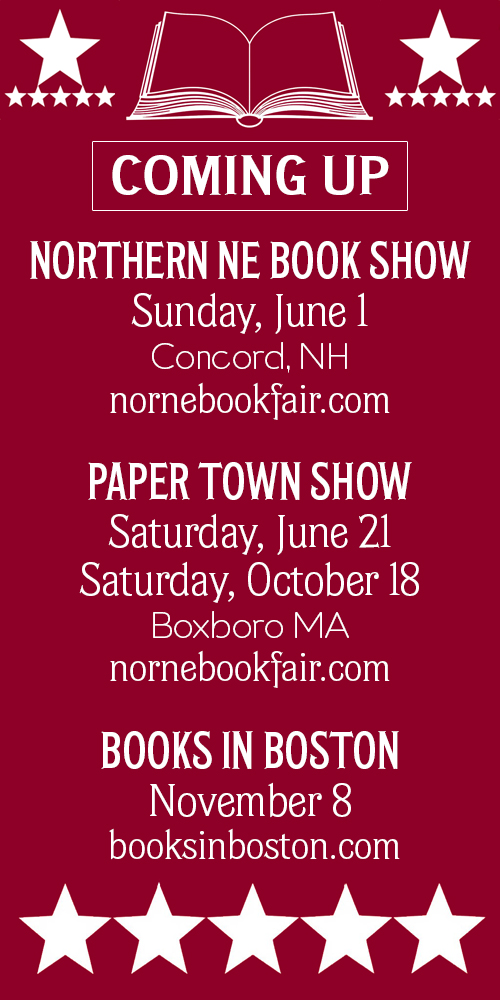The Price is in the Asking
When my old friend, ex-congressman and former World Bank President, Barber Conable, approached me about handling the dispersal of his library, top-heavy with Western New York and Iroquois Indian history, I hesitated. Still breathing in short pants after a year’s war with serious and wearing heart problems, I had about given up my retirement book trading activity. But then I looked at the Conable list. It was stunning. I had never handled such material.
For openers, there was the two-volume first American edition of de Toqueville and the first, second, fourth and several other editions of the Mary Jemison all-time most often reprinted captivity narrative. There were turn-of-the-19th century American travel books published in London, and there were enough Indians to start a new nation: Red Jacket, Joseph Brant, Cornplanter, Handsome Lake, Ely Parker, and others. There were fewer than 500 books on the list, but as far as I was concerned they were prime, bought strictly for content over a 20-year period.
“Oh, go ahead,” Laura advised. “We’ll all help and it will give you something to think about other than yourself.” Wives are so shrewd. There was an added incentive: Conable had noted down the prices paid for each item, so we might be able to illustrate details of the price explosion in antiquarian books we have all been aware of over the past 25 years or so.
Unless we were lucky beyond all reasonable expectations, there wasn’t much time. There was a great deal of material, both books and paper, about Rochester and the Genesee Valley generally, and we were only weeks away from last September’s 31st Annual Rochester Antiquarian Book Fair. I had decided not to participate but we changed my mind and signed up. It was an opportunity, perhaps, to move a substantial block of books. From there we’d either publish a nice list, move to the Internet or, as a last resort, sell out to a more active dealer.
(The Conables were about to move from nearby Alexander New York, to Florida, which accounted for the dispersal. Sad to relate, within a week after the Book Fair and before we had closed out the dispersal business, Barber was desperately ill with a pervasive staph infection. He died late in November in Sarasota and never knew how his collection had fared in the marketplace.)
We spent some time talking during the summer, discussed our sale ideas and agreed on a percentage split of receipts after expenses. Barber put up some expense money in advance. With our two boys, Tom and John, I went down to Barber’s house to box and pick up the books. Matter of an hour or two, right? Wrong! An entire afternoon, and we will not soon forget it.
Barber was not about to give up without a struggle. He wanted to see every item as the boys pulled the books off the shelves on either side of the fireplace in his study. He looked at them longingly for the last time, opened many to the title page or copyright page, wanted to talk about each one – why he had acquired it, who the author was, why it was of particular interest. In a sense it was a sad afternoon, but a rewarding one for us uneducated peasants.
A very few books he set aside. “I believe I’ll hold on to this one for a while,” he would say. One of them was George Catlin’s two volume Travels with Western Indians, published in 1844 in London. Man, I wanted that one badly. Barber had paid $350 for it in 1973.
There was never any doubt about whose books these were. On every first flyleaf, Barber had painstakingly written his name in his sharp, tiny hand. How many times had I asked him not to do it? “Collectors don’t like somebody else’s name written in their books. Your’re spoiling their value.”
He had an answer. “I like to think my name written in a book gives it more value,” he said disarmingly. You know, he may have been right.
*
As Laura and I, intent on pricing every item, attacked this pile that swamped our dining room, we quickly discovered that we probably had at least 60 or 70 per cent more books than were on the list. Obviously, Barber had neglected his bookkeeping but without any effect on his buying habits. Then I found the Marquis de Chastellux Travels in North America, which I had bought for Barber at a book fair in Pennsylvania about five years ago, the list had stopped in 1992.
For his copy of the huge, two-volume Travels Through the United States of North America, the Country of the Iroquois and Upper Canads, by the Duke de la Rochefoucault Liancourt, Conable paid $255 in 1991. It was published in London in 1799. We sold it in advance of the book fair for $400. But we learned a few days later that several pages had been carefully removed from one volume – pages that described Liancourt’s visit to an early Wadsworth home in Geneseo on the Genesee River in Western New York. Liancourt, it seems, was not impressed and described the Wadsworth digs as cave-like. In the early 1790’s, they probably were.
A subsequent Wadsworth, as the family grew in wealth and influence, excised the pages he saw as a mark on the family escutcheon. Or at least that’s the story. How that particular copy of Liancourt, resting for nearly two centuries in a Wadsworth home, got into the hands of a now-deceased out-of-town dealer from whom Conable had purchased it, will have to remain as another of those intriguing little mysteries of the antiquarian book trade.
The Jemison collection included 21 of the 50 or more known editions and printings of the captivity narrative by James E. Seaver, a country physician. Mary Jemison, as a child, was taken by Indians from her frontier home near present-day Gettysburg, Pennsylvania and ultimately spent more than 60 years on her farm along the Genesee in what is now Letchworth State Park. Included was the first edition, published in Canandaigua in 1824. Conable had bought his copy in 1974 for $450. It sells at auction these days for $2,500 and up.
We decided early-on to offer the Jemison collection as a unit “en bloc” and we resisted offers at Rochester for the individual printings. Ultimately it went with the remainder to a more active dealer than I could ever be. In response to the pleas of a Jemison collector in Buffalo, the dealer agreed I could pull two items from the assortment. They were the fourth printing, which was a pamphlet condensed by the Rev. Asher Wright, a missionary among the Senecas during the first half of the 19th century, and a rare copy of Gowahas Gowadoh, Wright’s Seneca Reader published in Boston in 1836 that translated the oral Seneca language into written form using the English alphabet.
The collector in Buffalo paid us $590 for the reader and $850 for the pamphlet and I suspect he must now have a truly remarkable Jemison collection. Conable had paid $250 for the pamphlet in 1976 and $150 for Gowahas Gowadoh, also in 1976. But I suspect that the Seneca Reader was the find of the dispersal. I had never seen a copy before and I never expect to see one again.
*
I spoke with a couple of the dealers sponsoring the Rochester Book Fair and suggested that due to the nature of the Conable collection we would like to do a little advance promotion if it didn’t interfere with their plans. They agreed readily, but might not have if they had known that one of our boys works for the firm that publishes all of the Rochester suburban weekly newspapers. We plastered every one of them with advertising and publicity and really produced a crowd, and there were almost as many Bentons at the fair as there were booths. Even our oldest daughter red-eyed in from California to be part of the action. It was mid-afternoon before I could get close enough to our shelves to straighten them out. But I know that the size of the turn-out benefitted most of the dealers who participated.
Strangely enough, a lot of the Rochester material did not sell. But Barber was well known in Rochester because of his 20 years of Congressional service, and many people knew of his interest in the Iroquois. They all wanted to see his Indians.
There were other inconsistencies. The de Toqueville did not sell, for instance. We had priced it aggressively at $3,800 against current auction estimates of $3,500. Barber had bought it in 1977 for $225. It became part of the remainder sold to the dealer. William L. Stone’s two-volume Life of Joseph Brant didn’t sell at the fair either. Brant was the Mohawk protégé of Sir William Johnson, Britain’s “king” of the Mohawk Valley. And that brings me to a disagreement I have with many other booksellers…
When an otherwise desirable book is seriously damaged, most people say price it “as is” and let it go bouncing through life from dealer to dealer as a cripple until it is reduced to dust. My opinion is that if a damaged but desirable book can be repaired, repair it. So the Brant was going to pieces and I had an old-fashioned English bookbinder of my acquaintance reback both volumes. He did a remarkably fine job, and we priced the pair at $210. Barber had paid $58 for them in 1974. I should have bought them myself and stuck them on my shelves, but they went with the remainder.
Stone’s Life and Times of Sir William Johnson, however, sold readily at $210 against Barber’s purchase price of $37 in 1974. Stone, early advocate of sensational yellow journalism as publisher of the Albany Commercial Advertiser, also wrote The Life and Times of Red Jacket, the Cayuga-born Indian orator who was in many ways a more interesting figure than Brant. It sold quickly at $190. Barber had bought it in 1973 for $25.
Henry R. Schoolcraft, a contemporary of Stone and Catlin on the Albany scene in the early and mid 1800’s, wrote the popular Notes on the Iroquois and Barber paid $80 for his copy of the Albany edition published in 1847. Now it is quoted in the price guides at $450 and we sold it at Rochester almost instantly for $485.
There was a single-volume edition of Francis Parkman’s Conspiracy of Pontiac in the library and Barber’s notes listed it as a first edition, presumably because the copyright page carried the 1851 date of the first edition. But the first edition (published in Boston) was actually in two volumes and, with all four maps intact, is now quoted at $600. Barber paid $65 for his one-volume version in 1975 and we got $150 for it. Parkman isn’t in very good standing around Western New York anyhow because, like the French, he saw the Senecas as the all-time bullies of the woods. In Western New York, we see them as purveyors of tax-free gasoline and cigarettes and proprietors of gambling casinos.
Two of the Rochester areas’s best known historian/archaeologists, Lewis H. Morgan and Arthur C. Parker, a Seneca, were well represented in the Conable collection. Parker wrote a biography of his famous uncle, Ely C. Parker, who served on General Grant’s staff toward the end of the Civil War and was present at Appomattox. Later, Ely Parker was head of the Bureau of Indian Affairs and had hoped to be a catalyst in bringing the two races together. Instead, he died isolated from both. Barber paid $50 for his copy in 1974 and we got $260 for it handily.
Arthur Parker also wrote the first study of any importance on Handsome Lake, the Seneca religious leader who revived the ancient Seneca faith with a dollop or two of Christian morality. Barber paid $20 for his copy in 1974. We priced it and sold it at $140. Parker’s Notes on the Ancestry of Cornplanter, for which Conable had paid $25 in 1981, sold for $110.
Morgan wrote and conducted extensive field work in pursuit of his interest in the Iroquois, especially the Senecas who were keepers of the western door for the five Iroquois tribes. Or six, depending on what year you’re talking about. But his most famous work was probably The American Beaver and His Works, published in Philadelphia in 1868. Barber paid $50 for his copy in 1974, the price guides list it at $350 today and we received $360 for it without any argument. Perhaps we should have priced it higher.
Morgan’s Houses of American Aborigines sold for $190 – Conable had paid $40 for it in 1974.
Stafford North’s well-respected History of Genesee County, bought by Conable for $90 in 1974, sold for $325, though not in very good condition. Barber had paid $46 for his copy of E.W. Vanderhoof’s Historical Sketches of Western New York, and a collector from Buffalo said he had been looking for it for years and was so surprised to find it that he wouldn’t even take time to argue with our $210 price. (He paid it.)
A second edition of J.N. Hubbard’s Sketches of Border Adventures in the life of Major Moses Van Campen, published in Bath in 1842, went easily at $150 against the $25 Conable had paid in 1975. A first edition, published in Dansville in 1841 in leather, currently brings $350.
*
The Conable books, which netted in excess of $22,000 in our dispersal activity, were far from the most valuable items in his collection. We could only stand in awe of his magnificent collection of pipe tomahawks, some dating from the 18th century. Most of them were bought by another collector. But the creme de la creme of his Indian artifacts was a monstrous collection of carved, wooden, ceremonial face masks, most of them produced for sale by Seneca craftsmen during the 19th century.
Barber was pleased to recall that the New York State Museum’s William N. Fenton, who wrote extensively on the subject, called Barber’s masks the finest collection in the country in private hands. A Fenton story on masks appeared in the 1940 Smithsonian Annual; Barber’s listing said he had received it as a gift in 1983, but we got $140 for it.
There are Indians who seek to remove all masks from private hands and return them to tribal possession as religious objects. In that connection, the Smithsonian Institution, of which the Museum of the American Indian is a part, recently turned over more than 400 masks in its possession to the Onondagas at Nedrow, south of Syracuse. Many of them, someone told me, were Seneca in origin.
The Conable masks once adorned the walls of his study. Other than a few husk masks, they are gone now. Since Barber was chairman of the Board of Trustees of the Museum of the American Indian when it was in New York City, and was a Regent of the Smithsonian at the time of his passing, perhaps his masks have gone back to the Indians. But I doubt it, I don’t know and I don’t ask.
When Laura and I were semi-frantically racing through the books and marking prices, I came across a little book entitled Pursuit of the Horizon, by Loyd Haberly, a biography of George Catlin published in 1948 by Macmillan. Barber was something of an authority on George Catlin and his art. Catlin spent a lifetime painting portraits of Indians and landscapes of the lands they occupied and I couldn’t help but suspect that Conable had missed this item when we cleaned out his shelves. So I was determined to save the book, which included many black-and-white reproductions such as Catlin’s well-known portrait of Red Jacket. The next time I saw Barber, I would give it to him, perhaps in answer to one of his frequent phone calls:
“Come on down and trade bon mots with me.”
But of course, there won’t be any next time. Instead I have a permanent and unexpected reminder of those pleasant times, “Barber Conable,” it says on the first flyleaf. “July, 1981.”
Tom Benton, a semi-retired newspaperman and advertising consultant, follows an old book path worn smooth by his father and grandfather. He resides in Darien Center, New York.


























